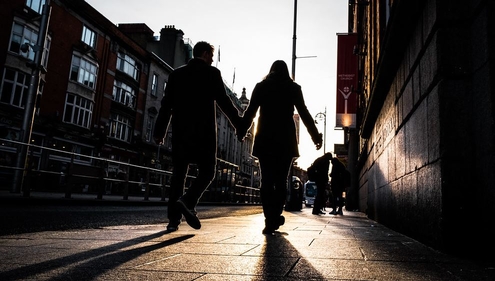A subgenre of photography known as “street photography” includes the taking of photographs in public settings with the intention of capturing candid moments of ordinary life. The “touch” of realism and candidness that these photographs have sets them apart from works in other genres. In most cases, random people and events taking place in a certain location at a specific time are captured on camera while the subjects are unaware that they are being filmed. The images often take on the appearance of stills from a moving picture, and in most cases, they tell a narrative.
When exactly did this kind of image-making first come into existence?
Because older cameras did not have many additional functions, photography used to have to take place in a “safe environment,” which was most often a studio. It was not until the latter half of the year 1830 that a French photographer by the name of Louis Daguerre tried to point his camera toward the window of his studio in order to take a picture of a section of a Parisian boulevard below. Even though there was a lot of activity on the street, the city traffic was moving far too quickly for it to be captured on film thanks to the extended exposure period of the camera.
Charles Nègre was another French photographer who worked in the 1850s to chronicle a variety of oddball characters seen on the streets, including workers, peddlers, wandering musicians, and others. His subjects included buildings and stores. However, it wasn’t until he utilised calotype in his camera that he was able to catch some movement in the still shot, exposing some of the energy that was there on the street.
Both André Kertész and Brassa were of Hungarian descent and specialised primarily on reportage. As a result, they created documented photos of common urban scenes, which gave street photography a boost. It was somewhere about the middle of the 1900s, and the Leica camera had already been introduced, which made it possible to catch spontaneous action to some extent. Henri Cartier Bresson, a French photographer, was the one who understood the requirements of the camera and was able to capture scenes as they occurred. The years that followed the Great Recession in the United States, along with the development of technology, provided plenty of street material for documentary photographers like Walker Evans and Dorothea Lange. These photographers’ work contributed to the differentiation of street photography from other types of photography.
The genre saw a “blooming” after the end of World War II. The number of photographers rose, technological advancements were made, and more people experimented with different ways of taking photographs. The 1950s, 1960s, and 1970s were a time when street photography began to depict more motion while also embracing faults and ambiguity in the shots. Emerging at the same time as a fresh aesthetic, the kind of street photography that we are familiar with today owes much to its predecessors.
The history of street photography spans over two centuries in this part of the globe. It had a “timid” beginning, but it has since seen significant development over the years. Today, with the assistance of technology, it is considered to be a popular subtype in the area of image-making, and it has a large number of devoted admirers.
The question is, where do we stand now? It seems like a good idea to wrap things off by taking some time to consider the progressions that street photography has made in recent years.
To begin, it is a well-known truth that street photography is experiencing unprecedented levels of popularity right now. This is excellent, but on the other hand, it results in many street images that do not necessarily live up to the highest standards. On the one hand, this is wonderful, but on the other hand, it results in these street photos. Numerous photographs are often devoid of significance and are, at most, aesthetically attractive snapshots. It would seem that there is a lack of expertise about the creative usage of aperture and shutter speed as well as sound information regarding picture composition. Regardless of this, everything is posted on Facebook and Instagram.
Because of this new phenomenon, the status of street photography has been somewhat diminished. Additionally, anybody may post their own street images and the process is much quicker. A mobile phone is the only other thing you need, in addition to a social media account, to be completely set up and ready to go. In order to clear up any confusion that may arise: Even in modern times, there are some very remarkable street photographs, as this collection from Frankfurt demonstrates.
In this regard, the new period has brought us a greater degree of photographic accessibility, albeit at the expense of image quality. In spite of this, the new development is a good thing. Photography enthusiasts need to exercise a little bit more discretion when picking the sites they consult.
